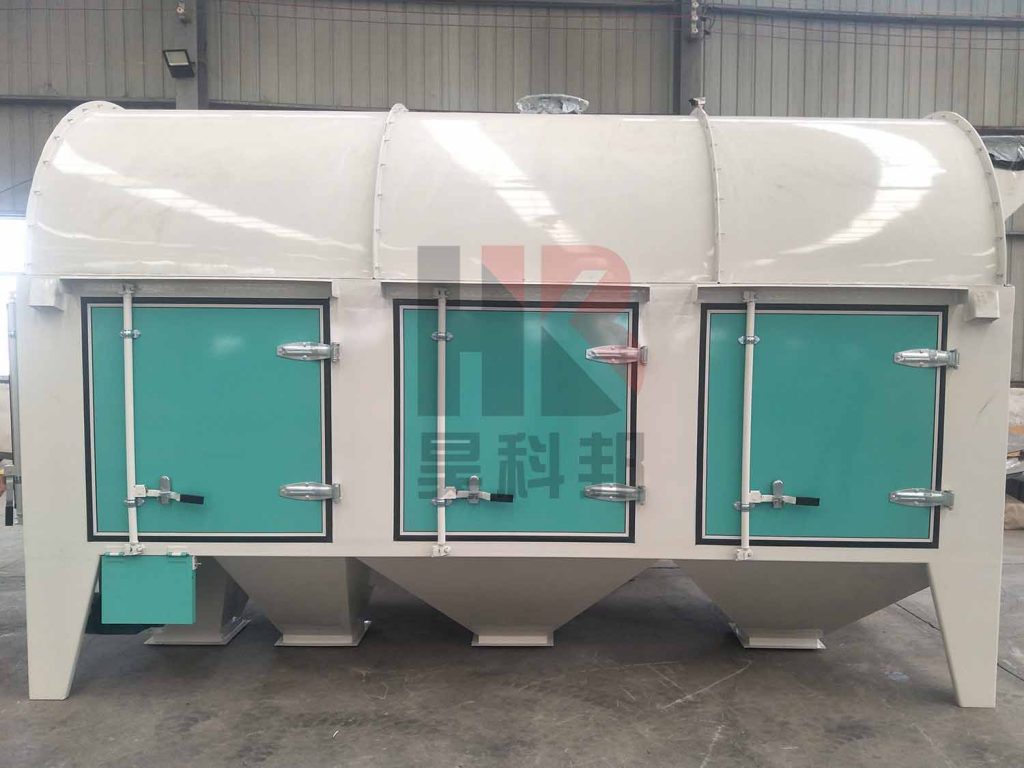The function of drum screen is mainly reflected in improving grain quality, ensuring storage safety, and achieving refined processing. Here is a detailed analysis of the key role of drum screen in grain-related scenarios.

The drum screen in grain silos can effectively remove impurities from grain, such as sand, stones, rice husk fragments, and some spoiled or insect-infested grains. After grain harvest, various impurities are often mixed in. These impurities not only affect grain quality but may also damage equipment during subsequent processing. The drum screen, with its precise screening ability, separates impurities from high-quality grain, ensuring that stored grain meets national quality standards and market demands.
The precise screening of the drum screen can prevent grain heating and mold growth caused by excessive impurities. This reduces grain loss during storage, extends shelf life, and ensures safe storage. When grain contains too many impurities, these impurities can adsorb moisture and become a breeding ground for microbes, causing grain to heat and mold.
Using the drum screen in grain silos enables rapid screening and grading of grain. This not only increases the efficiency of grain intake and discharge but also facilitates grain management and allocation. During grain intake, the drum screen can quickly grade grain by particle size, allowing different grades of grain to be stored separately for precise management later on.
The drum screen is one of the important devices for achieving refined grain processing. It can finely classify grain based on different particle sizes and quality. This provides precise raw material ratios for subsequent processing steps, improving the quality and stability of processed products and enhancing the company's competitiveness in the market.